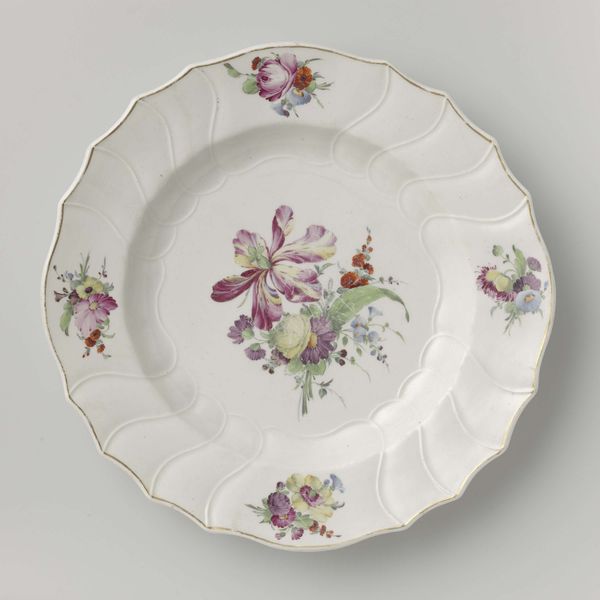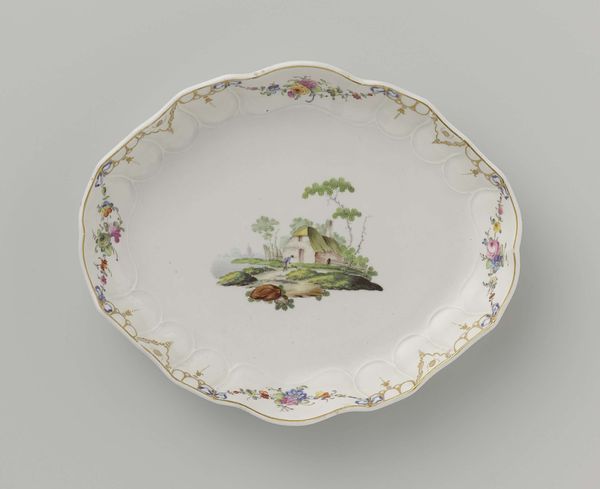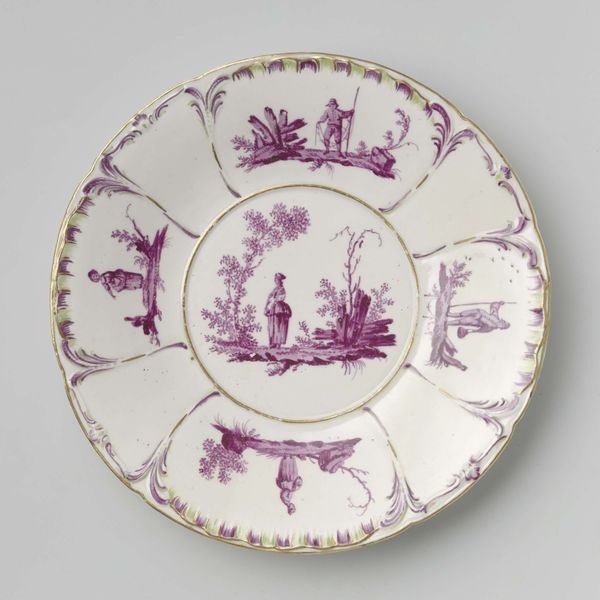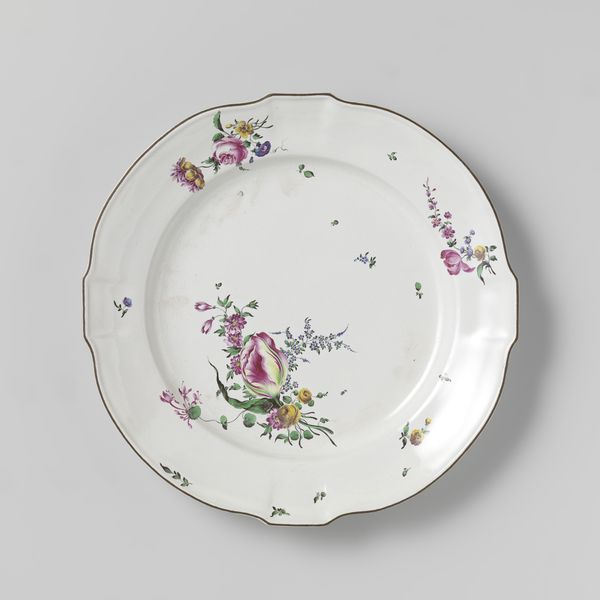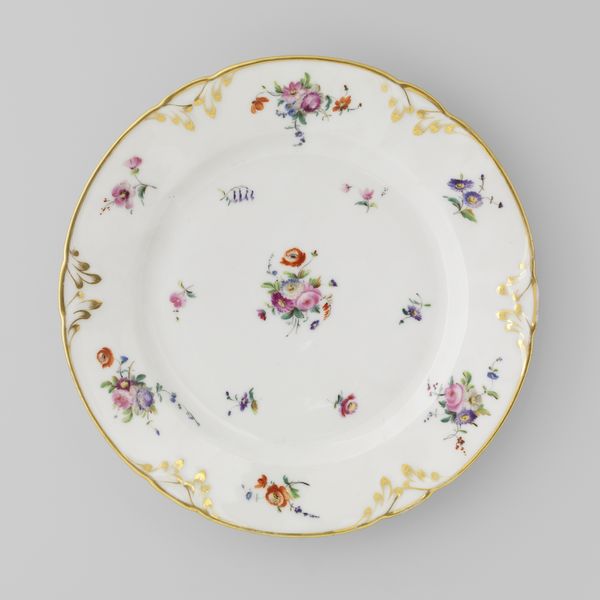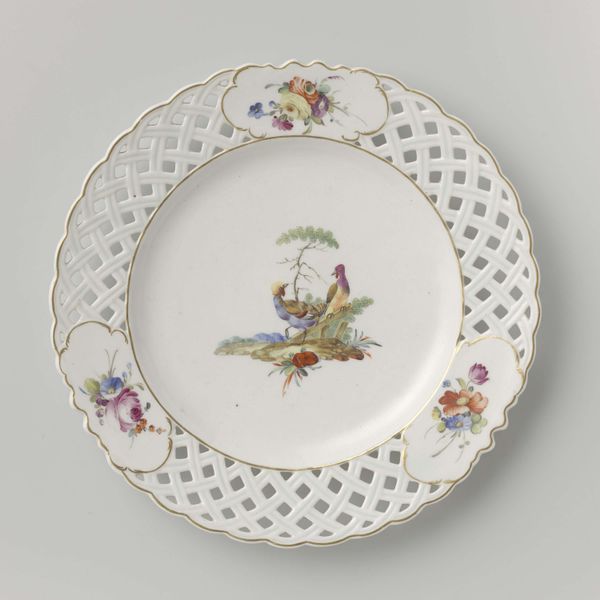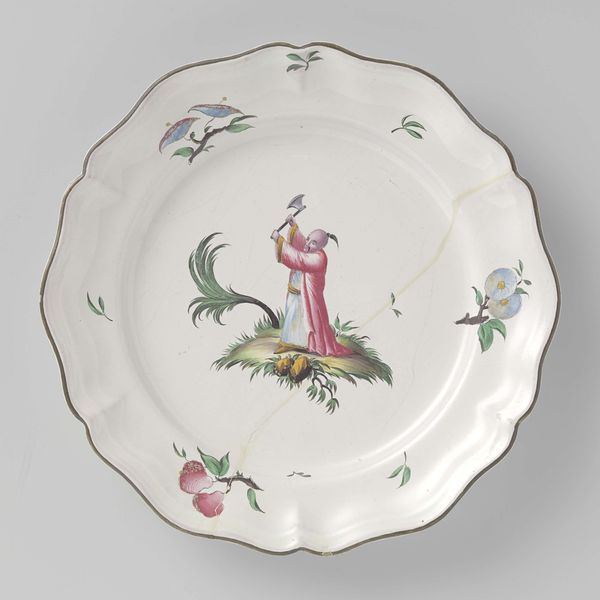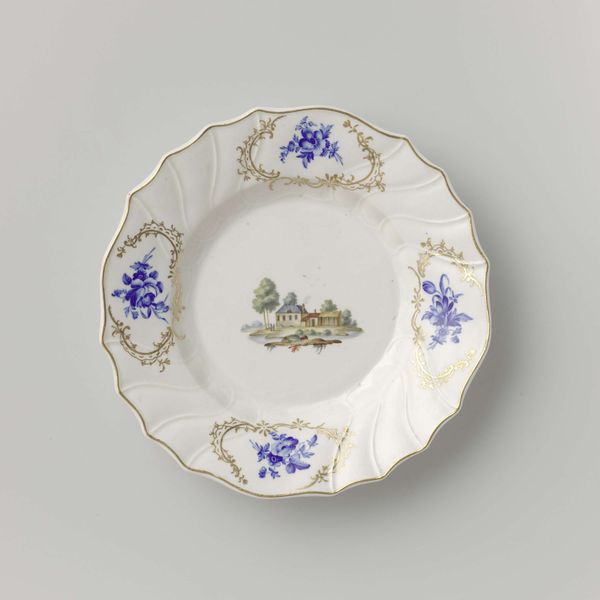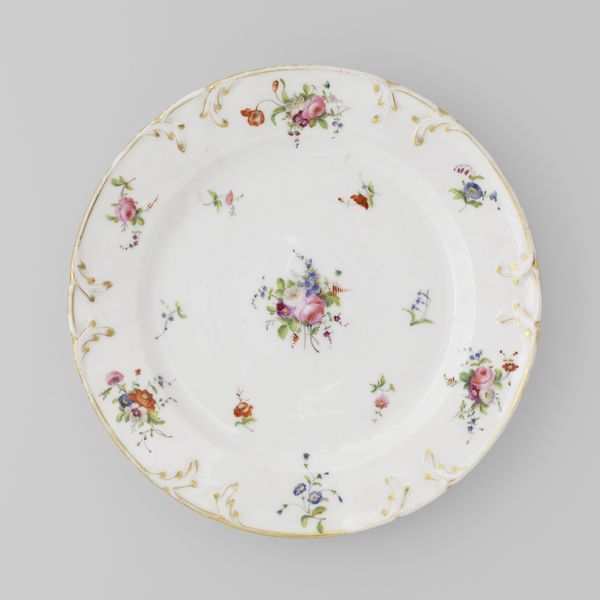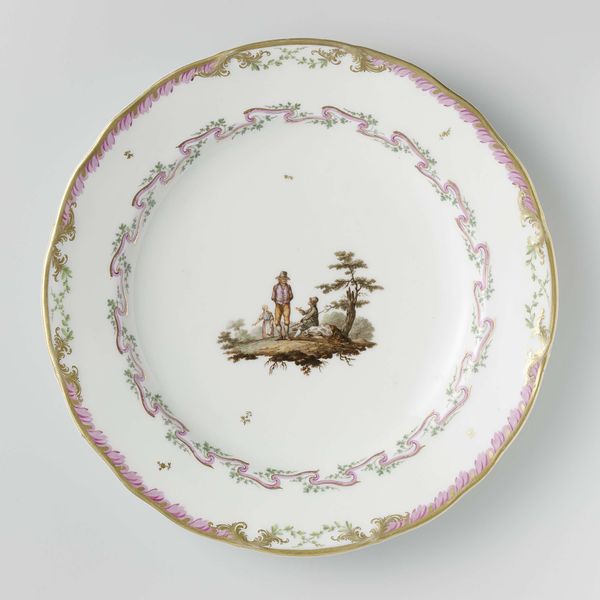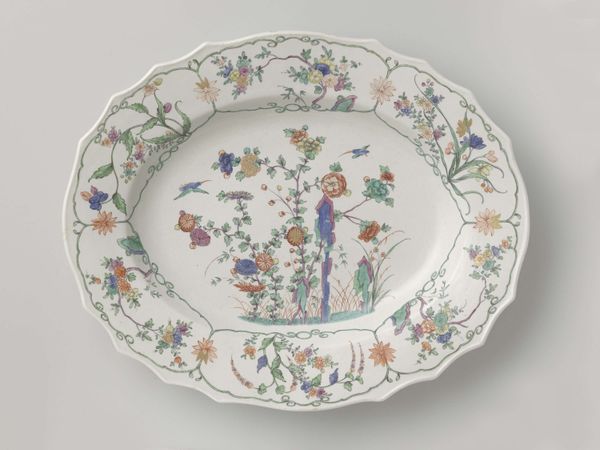
Dimensions: diameter 24.8 cm, height 3.4 cm, diameter 14.2 cm
Copyright: Rijks Museum: Open Domain
Curator: This ceramic plate, created around 1780, is known as "Plate with a woman in a landscape." It’s currently part of the Rijksmuseum collection and attributed to the Doornik manufactory. Editor: It’s striking how delicate the colors are; an almost pastel wash. The Rococo sensibility is evident in the fanciful decorations around the rim, but the central figure possesses a stillness that feels rather modern, or at least proto-Romantic. Curator: Indeed. The formal composition adheres to classical principles. Notice how the artist contrasts the detailed rendering of the female figure with the looser, more suggestive treatment of the landscape. This tension creates visual interest and emphasizes her presence within the scene. The overall effect relies on asymmetry within a well-defined structure. Editor: Right, and wouldn’t you say the use of stoneware for what's essentially a genre painting complicates its social purpose? Plates are for everyday use, yet this image suggests an idealized, leisurely existence not necessarily available to everyone who would be eating off it. It serves to both beautify the ordinary and also, perhaps, reinforce a certain social hierarchy. Curator: Your analysis has value, though my perspective hones in on the formal attributes. The limited palette is deliberate and creates visual harmony, emphasizing tonal gradations within a narrow color range. This gives the image depth and reinforces the subject's centrality on the plate. It also enhances the curvature effect, creating a compelling sense of perspective. Editor: That constrained palette and idyllic scene speak volumes. For those privileged enough, such plates might have fostered conversations about ideal lives, projecting a form of social control under the guise of beauty and decoration. We tend to see the surface gloss but lose what such objects actually communicated within their socio-political context. Curator: While the artwork embodies structural elements of artistic mastery, your historical unpacking illuminates deeper cultural layers imbedded within "Plate with a woman in a landscape." Editor: Agreed. Seeing its formal beauty with an informed view provides an understanding of art as part of lived human experience, extending beyond compositional aesthetics alone.
Comments
No comments
Be the first to comment and join the conversation on the ultimate creative platform.
